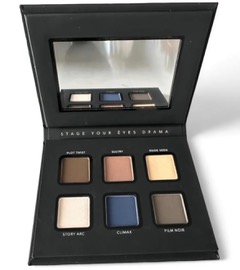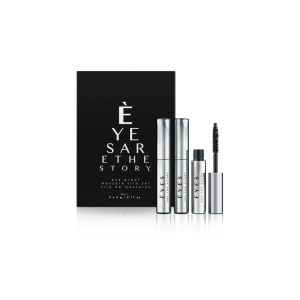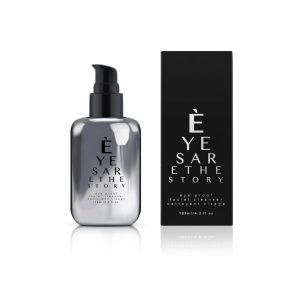Enhance Your Eye Health While Mastering Makeup Techniques: Solutions for Dry Eyes
In the dynamic landscape of the beauty industry, many women face a significant challenge: achieving the perfect makeup look while maintaining eye health. As we advance our abilities in applying dramatic winged eyeliner, rich volumizing mascara, and expertly blended smoky eye looks, a rising number of individuals are grappling with the unwelcome issue of dry eye syndrome.
This condition—marked by inadequate tear production or compromised tear quality—can make it difficult to enjoy makeup application. For many, the discomfort and irritation associated with dry eyes can lead to a decision to forego makeup entirely, which poses a significant concern for those wishing to express their creativity and individuality through cosmetics.
Discover the Innovative Blend of Science and Beauty with ÈYES ARE THE STORY
At the forefront of this transformative approach is ÈYES ARE THE STORY, a pioneering brand that seamlessly combines scientific research with beauty products designed for eye safety. The compelling story of founder Amy Gallant Sullivan not only reflects her profound passion for promoting eye health but also highlights her family's substantial contributions to the medical field.
Growing up in a household filled with healthcare professionals sparked Amy's early fascination with the intricate world of ocular science. Her father, David A. Sullivan, was an Associate Professor of Ophthalmology at Harvard Medical School, while her brother, Benjamin D. Sullivan, played a vital role in founding TearLab (now known as ScoutPro under Trukera Medical).
Moreover, her mother, Rose, an intensive care nurse, provides personal insights into conditions such as dry eye disease (DED) and meibomian gland dysfunction (MGD).
Being raised in an environment rich in discussions about eye health naturally led to a heightened awareness of ocular surface disease (OSD) and its far-reaching implications. During her involvement with the Tear Film & Ocular Surface Society (TFOS), Amy understood the critical need for consumer products that prioritize eye safety.

Understanding the Gender Disparity in Dry Eye Disease: Key Findings
Amy's pivotal discovery was that dry eye disease occurs significantly more often in women than in men, with the prevalence nearly doubling. This led her to ask an essential question: Which activities are predominantly undertaken by women compared to men?
The answer was evident—cosmetic usage. Statistics reveal that women typically use around 12 beauty products daily, whereas men average just six. This disparity underscores the importance of developing eye-safe cosmetic options.
As Amy delved deeper into her research, she uncovered alarming information regarding common cosmetic ingredients.
For example, benzalkonium chloride (BAK), a preservative commonly found in glaucoma medications, also appears in a variety of cosmetic products, including eye makeup.
What is even more concerning is that the permitted concentration of BAK in cosmetics can exceed that in glaucoma treatments by thousands of times, raising significant safety concerns for those with sensitive eye health.
This startling realization ignited Amy's relentless two-decade research pursuit to explore the intricate relationship between cosmetics and dry eyes. Her dedication bore fruit in the form of ÈYES ARE THE STORY—a groundbreaking line of cosmetics and skincare specifically designed for individuals with sensitive eyes. Amy coined the term “optocosmetics” to reflect this innovative fusion of beauty and pharmaceutical science that prioritizes ocular safety and comfort.
Identifying the Symptoms and Causes of Dry Eye Syndrome for Better Management
What exactly is dry eye syndrome, and why is it becoming increasingly prevalent among various demographics?
This syndrome occurs when the eyes fail to produce a sufficient quantity of quality tears to properly lubricate the eye surface, or when they struggle to retain moisture on their surface.
This condition can lead to a wide range of uncomfortable symptoms, which may include:
- Stinging or burning sensations in the eyes
- A gritty or sandy feeling in the eyes
- Redness and irritation of the eye surface
- Blurred vision that can fluctuate
- Heightened sensitivity to bright lights
- Difficulty wearing contact lenses comfortably
Exploring the Intricate Dynamics Between Makeup and Dry Eyes
The relationship between makeup and dry eyes is intricate and multifaceted. Those alluring shimmering eyeshadows that we love? The minuscule particles can penetrate our tear film, leading to irritation and discomfort.
And what about the mascara that enhances our lashes? It can harbor bacteria which may exacerbate eye irritation. Furthermore, the processes of applying and removing eye makeup can disrupt the delicate tear film essential for keeping our eyes lubricated and healthy.
Investigating Why Women Face a Higher Risk of Developing Dry Eyes
Women are at a higher risk of experiencing dry eyes due to a variety of factors. Hormonal fluctuations throughout their lives, particularly during menopause, can significantly impact tear production.
Additionally, the prevalence of autoimmune disorders such as Sjögren’s syndrome is notably higher among women, complicating this situation further. Most crucially, the increased use of eye makeup and the popularity of false eyelashes can severely disrupt the delicate balance necessary for maintaining optimal eye health.
The Article Cosmetics for Dry Eyes: Makeup Tips for Sensitive Skin Was Found On https://limitsofstrategy.com





